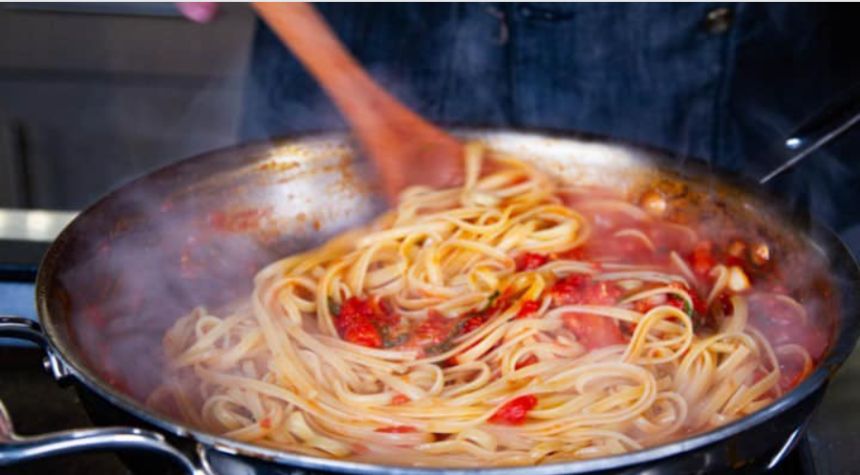Introduction to Cooking Pasta
Pasta is more than just a meal; it’s a canvas for creativity, a comfort food that warms the soul, and a staple in kitchens around the world. Whether you’re twirling spaghetti onto your fork or savoring every bite of lasagna, there’s something magical about this versatile dish. But cooking pasta isn’t simply throwing some noodles into boiling water and hoping for the best https://me-encantas.com/2020/02/18/los-mejores-consejos-para-cocinar-pastas/. There’s an art to it—a science even—that can elevate your culinary skills from average to extraordinary.
Ready to unlock the secrets behind perfect pasta? From understanding different types of noodles to crafting delicious sauces, this guide will take you through everything you need to know. Let’s dive deep into the world of pasta cooking and discover how easy it can be to create mouthwatering dishes that impress family and friends alike!
Understanding the Different Types of Pasta
Pasta comes in a delightful variety, each type bringing its own charm to the table. From long strands like spaghetti to short shapes such as penne and fusilli, there’s something for every palate.
Thin pasta works wonderfully with light sauces. Think angel hair paired with fresh tomato sauce or olive oil infused with garlic. It allows those flavors to shine through.
On the other hand, robust varieties like rigatoni hold onto heartier sauces beautifully. Their ridges trap bits of meat or vegetables, creating satisfying bites.
Don’t overlook specialty pastas like farfalle or orecchiette. They add a playful touch and are perfect for salads or unique dishes that need flair.
Understanding these differences enhances your cooking experience. Choosing the right pasta elevates any meal from ordinary to extraordinary!
Essential Tools and Ingredients for Cooking Pasta
Cooking pasta requires a few essential tools that can elevate your culinary skills. A large pot is crucial for boiling water and allowing the pasta to move freely, ensuring even cooking. Opt for one with a lid to speed up the process.
A colander is another must-have. It makes draining cooked pasta effortless while keeping it intact. Look for one with sturdy handles for easy maneuvering.
When it comes to ingredients, quality matters. Start with high-quality dried or fresh pasta made from durum wheat for the best texture and flavor. Don’t forget sea salt, which should be added generously to boiling water—it enhances the taste significantly.
Olive oil is also beneficial, especially if you plan on tossing your pasta after cooking. Having fresh herbs like basil or parsley can add vibrancy and freshness to your dish in just moments.
Step-by-Step Guide on How to Cook Perfect Pasta
Start with a large pot filled with water. Use at least four quarts for every pound of pasta. This ensures the noodles have enough space to move around while cooking.
Add a generous amount of salt once the water reaches a rolling boil. Aim for about one tablespoon per quart; this enhances flavor remarkably.
Carefully add your pasta, stirring immediately to prevent sticking. Cooking times vary by type, so check the package instructions for guidance.
Taste-test a minute before the suggested time is up. You want it al dente, firm but not hard.
When done, reserve some cooking water in case your sauce needs thinning later. Drain your pasta quickly but don’t rinse it—this washes away essential starches that help sauces cling beautifully.
Toss it right into your sauce or serve alongside, allowing flavors to meld seamlessly on the plate.
Tips for Making Delicious Pasta Sauces
Creating delicious pasta sauces is an art that can elevate your dish from ordinary to extraordinary. Start with a solid base. A simple sauté of garlic and onions in olive oil brings out rich flavors.
Experiment with fresh herbs like basil, parsley, or oregano for brightness. Adding them at different stages can dramatically change the taste profile.
Don’t shy away from using high-quality tomatoes—canned San Marzano are especially sweet and flavorful. For cream-based sauces, consider adding cheese slowly for a smooth texture.
For depth, incorporate ingredients such as red wine or balsamic vinegar. These add complexity without overwhelming the sauce.
Balance acidity by finishing off with a pinch of sugar if needed. Always remember to season generously throughout the cooking process for maximum flavor impact!
Don’t forget about garnishes: toasted nuts or grated cheese can provide delightful contrasts in both taste and texture.
Creative Ways to Serve and Present Your Pasta Dish
Elevate your pasta presentation by playing with colors and textures. Use vibrant vegetables like cherry tomatoes, spinach, or bell peppers to create a stunning contrast against the pasta.
Consider serving your dish in unconventional containers. Mason jars or wooden boards can add a rustic charm to your table setting. Layering ingredients visually enhances appeal while keeping portions manageable.
Garnishing is key—fresh herbs like basil or parsley not only brighten the plate but also intensify flavor profiles. A sprinkle of grated cheese adds elegance and richness.
For a playful twist, try shaping pasta into nests using forks before plating. Alternatively, serve individual servings in small cast-iron skillets for that cozy feel.
Don’t shy away from sauces either! Drizzle them artistically across the plate for an eye-catching design that invites curiosity about what’s inside each bite.
Common Mistakes to Avoid When Cooking Pasta
One of the biggest mistakes is not using enough water. Pasta needs room to move and cook evenly. If the pot is too small, you’ll end up with sticky clumps.
Another frequent error is adding oil to the cooking water. This can prevent sauces from adhering later on. Instead, focus on seasoning your water generously with salt for enhanced flavor.
Many also overlook the importance of stirring pasta in those initial minutes. This helps prevent sticking and ensures even cooking.
Draining pasta too soon can be problematic as well. Reserve a bit of that starchy cooking water; it’s perfect for adjusting sauce consistency later.
And finally, don’t forget about timing! Each type of pasta has its own ideal cooking duration—check the package instructions instead of guessing to achieve that perfect al dente texture.
Conclusion
Cooking pasta can be an enjoyable and rewarding experience. With the right techniques, tools, https://me-encantas.com/2020/02/18/los-mejores-consejos-para-cocinar-pastas/and a sprinkle of creativity, you can elevate any dish to new heights. By understanding the various types of pasta available and mastering the art of cooking it perfectly, you set yourself up for culinary success.
As you explore different sauces and presentation styles, don’t be afraid to make each dish your own. Experiment with flavors and ingredients that resonate with your taste buds. Remember to avoid common pitfalls along the way; this will ensure that every plate is a masterpiece.
With these guidelines in hand, you’re ready to create delicious pasta dishes that impress family and friends alike. So gather your ingredients, unleash your inner chef, and enjoy the delightful journey of cooking pasta.







